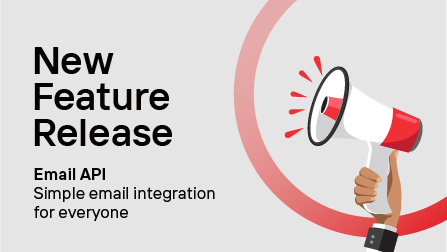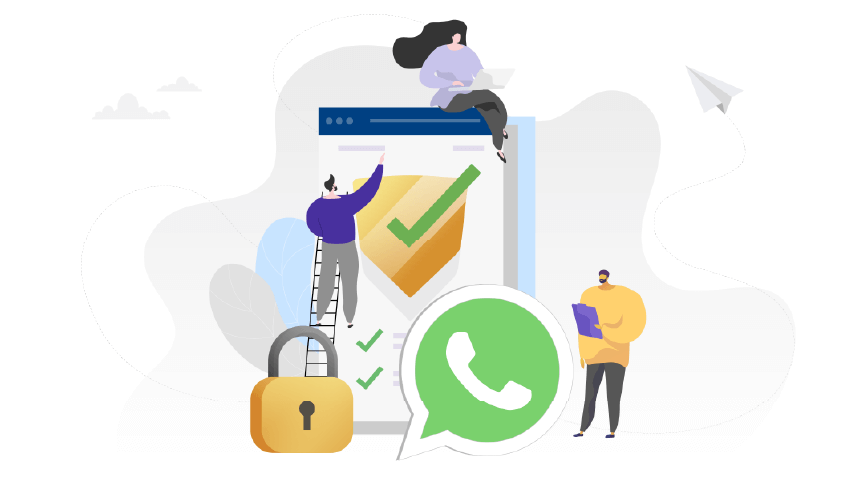WhatsApp is a powerful communication channel with 2 billion users, who seek to connect with their friends and families. With its massive popularity and reach, it's important for brands and businesses to build their presence on WhatsApp as it offers a quick, efficient, and secure method for customers communications.
As customer satisfaction and privacy are very important keywords in today’s digitally abundant world, WhatsApp has required businesses to obtain customer opt-ins before they can send out any sort of messages or notifications. This enhances the communication process and ensures that customers only connect with businesses they want to hear from.
There are multiple ways for businesses to obtain opt-ins from their desired customers; including website forms, checkboxes, and IVR flows. In this regard, WhatsApp has listed three requirements all businesses must comply by while collecting opt-ins:
- Businesses must clearly state that a person will receive messages over WhatsApp.
- Businesses must clearly state the business’s name.
- Businesses must be in compliance with any applicable laws.
Getting your customers’ permission to connect with them over WhatsApp is crucial and has many benefits. It helps businesses optimize user experiences by segmenting the type of messaging any user has agreed to receive. It also enables message personalization in ways that were not accessible before. WhatsApp also makes it available for businesses to monitor their delivery rates and any users who may choose to opt-out from receiving future messages.
Here is how to collect opt-ins for WhatsApp Business in 10 different ways:
1. Direct request to opt-in
Customers reach out to businesses every day. There is an already established form of interaction. Customer support agents can make use of that fact simply by asking the customers directly if they’d like to receive updates and notifications over WhatsApp. This is also a great opportunity to explain to customers all the different ways WhatsApp makes it easier to connect and the type of messages they can receive.
2. Checkboxes
Checkboxes are a great tool to gather customer consent. All they need to do is to enter their phone number and click a button. What businesses must remember is to be clear regarding customer expectations so that customers won’t forget what they signed up for and avoid spam.
3. Website pop-ups
Any business’s website is among the top channels customers will look for before making any interaction. A simple and intuitive pop-up form could inform your customers that your brand offers WhatsApp Business services, making it easier for them to get the most out of their experience with the brand.
4. Contact forms
Pop-ups and banners aren’t the only effective way to collect opt-ins via websites. Any business website will surely have a “Contact Us” page. A WhatsApp option can be made available to customers visiting that page to guarantee a straightforward opt-in method.
5. Existing communication channels
There is a high chance that a great portion of customers have already interacted with the business before. This means there is an already open line of communication between them, such as email or SMS. Businesses can use that to re-direct customers to WhatsApp, increasing brand awareness.
6. Third party channels
Third party channels enable businesses to reach a much wider audience and broadcast their messages in little time. Channels like SMS, social media, or email can easily explain what it means to opt-in for WhatsApp and the process can be as simple as sending a link for customers to click on.
7. Points of Sale
Face to face interactions are still more persuasive than digital interactions. Salespersons in stores can inform customers about their WhatsApp services and obtain opt-ins on the spot.
8. Advertisements
Digital advertising has proven to be an effective way of reaching a great number of people. Collecting customer opt-in through an online ad is an easy way that achieves multiple goals at once.
9. QR codes
QR codes are more popular than ever. Placed in an effective POS location, customers can be more compelled to scanning a QR code that directly initiates a WhatsApp conversation with the business.
10. Existing workflows
No matter the type of industry, customers tend to interact with businesses in order to engage in some form of transaction. It could be an online reservation, shopping, a doctor’s appointment, or any other process. Businesses then have a great chance to embed WhatsApp opt-in in the customer’s journey, tempting them to receive all their transaction updates over WhatsApp.
WhatsApp Business is a great way to engage with customers in a healthy manner. You can reach out to CEQUENS for more information about WhatsApp Business API. As a Solution Provider, we help you design a communication experience for the future.



